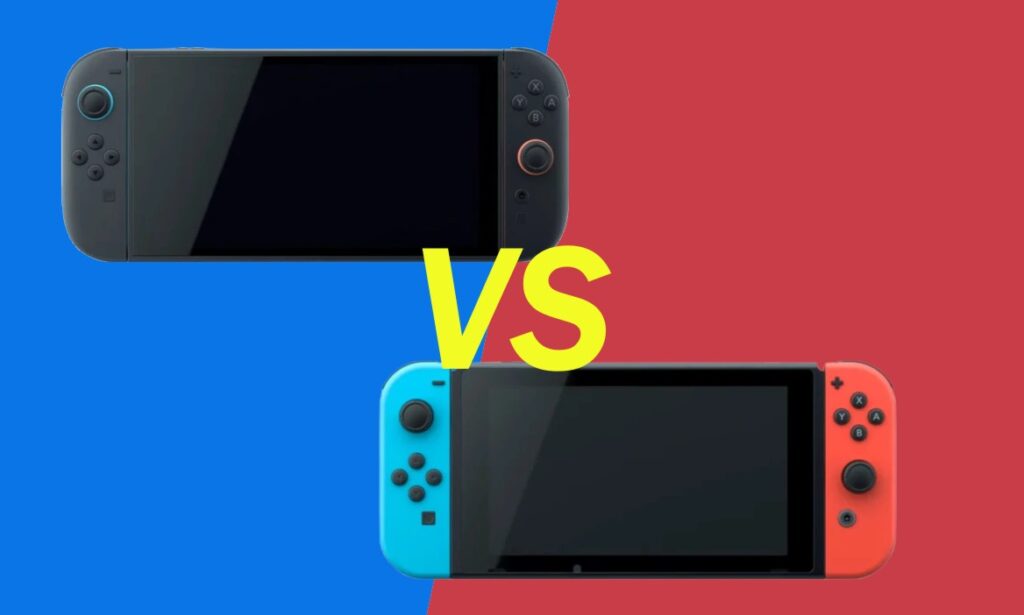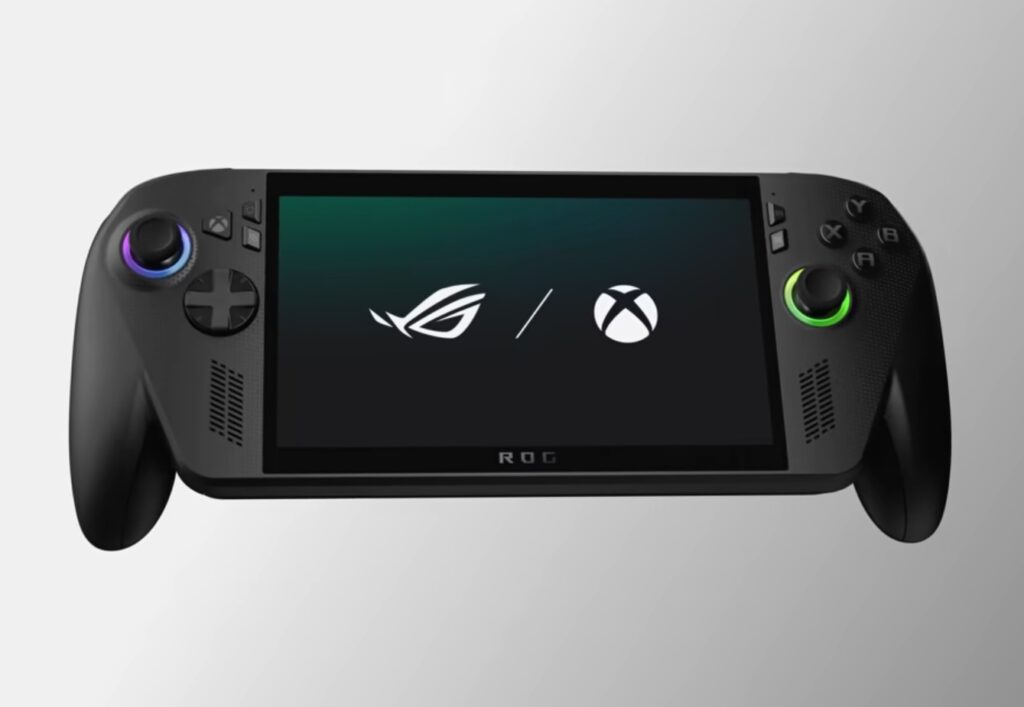Switch 2 vs. Original Switch: A Gamer’s Perspective

When Nintendo first launched the Switch in 2017, it took the gaming world by storm, seamlessly blending handheld and console gaming. Now, with the release of the Switch 2, gamers are finally having a true next-generation experience. But how does the new console stack up against its predecessor? The new console brings a faster processor, crisper visuals, a bigger high-refresh display, and modern features like GameChat and 4K output when docked. But the big question lingers: is the upgrade truly worth it for you?
Let’s dive into a comparison of the two systems, examining their hardware, performance and gaming experiences. Tailored to four main groups of players: casual gamers, hardcore enthusiasts, docked players, and handheld-only users. By the end, you’ll have a clear picture of whether the leap to Switch 2 makes sense for your gaming lifestyle—or if sticking with what you have is the smarter move.
What’s New in the Nintendo Switch 2?
More Powerful Hardware
The Nintendo Switch 2 makes a big leap forward in terms of processing power. With upgraded CPU and GPU performance, games now run smoother with more stable frame rates and higher resolutions. This not only enhances current titles but also opens the door for more technically ambitious games in the future. For players who found the original Switch struggling with demanding releases, this is one of the most practical reasons to consider upgrading.
Improved Graphics and 4K Support
One of the most talked-about features of the Switch 2 is its ability to output in 4K resolution when docked. Combined with HDR support, games look sharper and more vibrant than ever before. On a large TV, the difference is immediately noticeable compared to the 1080p cap of the original Switch. While handheld play doesn’t hit 4K, the upgraded screen still delivers a clearer and more detailed image, making the overall experience much more visually appealing.
Better Handheld Experience
Handheld players also benefit from significant improvements. The Switch 2 features a larger, brighter screen with enhanced color reproduction, making long play sessions easier on the eyes. Battery efficiency has also been refined, meaning you can game for longer without needing to recharge. For those who primarily use the Switch as a portable console, this update represents a meaningful quality-of-life upgrade.
Backwards Compatibility
A major selling point of the Switch 2 is its backwards compatibility with original Switch games. Players don’t have to worry about losing access to their existing library, which means upgrading feels less risky. In many cases, older titles also benefit from improved performance on the new hardware, giving classics like Breath of the Wild or Mario Odyssey a fresh new feel.
New Features and Upgrades
Beyond raw power, Nintendo has added smaller but welcome touches to the Switch 2. These include faster loading times, improved Joy-Con reliability, and better connectivity for smoother online play. While these may not be headline-grabbing features, they collectively create a much more polished and reliable gaming experience.
Switch 2 Upgrade Guide: Which Players Should Upgrade?
With the release of the Nintendo Switch 2, many players are wondering if the upgrade is truly worth it. The answer largely depends on the type of gamer you are and how you use your current Switch.
Casual gamers
The Switch 2 may not feel like a necessary purchase for casual gamers. If your playtime is limited to a few rounds of Mario Kart with friends or the occasional indie title, the improvements in 4K graphics and faster performance are nice to have, but far from essential. The original Switch or the Switch OLED can still deliver a satisfying experience without the higher price tag of the new console.
Hardcore gamers
The Switch 2’s more powerful hardware ensures smoother framerates, quicker loading times, and sharper visuals in demanding titles. For players who sink hundreds of hours into The Legend of Zelda, Pokémon, or upcoming AAA releases, the leap in performance makes a huge difference. It also helps future-proof your setup, ensuring you won’t be left behind as developers push the limits of Nintendo’s hardware.
Docked players
If you’re primarily a docked player who enjoys gaming on a big 4K TV then the Switch 2 is a particularly compelling upgrade. Unlike the original Switch, which tops out at 1080p, the Switch 2 outputs in 4K with HDR support, transforming the experience of games designed with rich, detailed visuals. For those who prefer the living-room console feel, the difference will be immediately noticeable.
Handheld-only players
The decision is a little more nuanced for handheld-only players. If you still use the launch edition of the original Switch, upgrading to the Switch 2 will give you a brighter, sharper display and better battery life — a clear quality-of-life improvement. However, if you already own the Switch OLED, the jump isn’t as dramatic. The OLED’s vibrant colors and excellent handheld screen remain impressive, so unless you crave the performance boost or upcoming exclusives, you might prefer to wait.
Parents buying for kids
While the Nintendo Switch 2 is undeniably the most powerful and polished version of Nintendo’s hybrid console, not every player will benefit from rushing out to upgrade. For parents buying for kids, the improvements in visuals and performance may not justify the higher price. Most younger players are perfectly content with the original Switch or even the Switch Lite, which can still handle the full library of family-friendly titles at a much lower cost.
Budget-conscious players
Finally, budget-conscious players may find it wise to hold off. As with any new console launch, the Switch 2 is at its most expensive right now. Meanwhile, the release of new hardware often drives down the price of older models, making the original Switch or Switch OLED an even more attractive choice for those looking to save money. Waiting a year or two could also mean picking up the Switch 2 at a lower price, bundled with popular games.
Player Type | Upgrade Recommendation | Why |
Casual Gamers | Not essential | Nice improvements, but the original Switch or OLED is still perfectly fine. |
Hardcore Gamers | Strongly recommended | Huge performance boost, 4K docked play, future-proof for big releases. |
Docked Players (TV mode | Recommended | 4K 60fps and HDR output make a massive difference on modern TVs. |
Handheld-Only Players | Depends | Great upgrade if you’re on the original Switch; OLED users may want to wait. |
Parents buying for kids | Skip / go cheaper | Kids won’t notice the leap in visuals; older models are more cost-effective. |
Budget-Conscious Players | Wait | Pricey at launch — older Switch models still offer excellent value. |
Ultimately, the Switch 2 upgrade decision comes down to playstyle. Hardcore gamers and docked players will benefit most, while casual gamers and handheld OLED users may find less urgency in upgrading right away.
Conclusion: Should You Upgrade to the Nintendo Switch 2?
The Nintendo Switch 2 is a big leap forward in power, visuals, and future-proofing. For players who want the best performance, crisp 4K docked gameplay, and faster load times, it’s a fantastic upgrade. But if you’re a casual gamer, parent buying for kids, or a happy Switch OLED owner, sticking with your current system is still a smart choice.
It’s clear that Nintendo is taking a substantial step forward. While the original Switch redefined console gaming with its hybrid approach, the anticipated advancements in display, performance, and controller technology could elevate the gaming experience to new heights. Ultimately, both consoles will serve their purpose for different audiences. The original Switch will remain a staple for newcomers and casual gamers, while the Switch 2 is likely to appeal to those seeking the latest technology and performance innovations. As we decide whether the it is worth upgrading or not, it’s an exciting time for Nintendo fans and gamers alike—one that promises to shape the future of portable gaming.
In the end, the real question isn’t “Is the Switch 2 worth it?” but rather “Is it worth it for you?”
